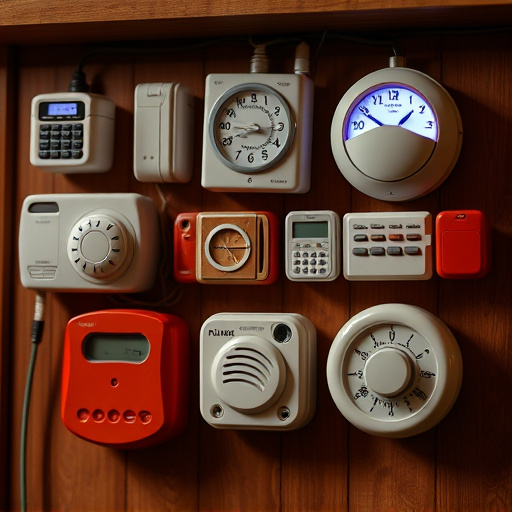Discrete wearable security alarms offer personal protection with compact designs resembling accessories. Key features include a powerful 100+ decibel sound heard up to 50 meters (Best Personal Alarm Sound Distance), automatic fall detection, and panic buttons for safety during solo activities. Choosing the right alarm requires considering sound quality, distance, portability, battery life, water resistance, and adhering to local noise ordinances while prioritizing data privacy.
Discrete wearable security alarm systems offer personal safety in an elegant, compact form. This article delves into the intricacies of these powerful tools, guiding you through their core components and crucial features. We explore the significance of the best personal alarm sound and its impact on distance, testing performance, and navigating legal considerations for enhanced peace of mind. Learn how to choose a discrete wearable that suits your needs and ensures your safety effectively.
- Understanding Discrete Wearable Security Alarms
- Key Features: What to Look for in Personal Alarms
- Best Personal Alarm Sound and Its Impact on Distance
- Testing and Evaluating Alarm System Performance
- Legal Considerations and Privacy Concerns with Wearables
Understanding Discrete Wearable Security Alarms
Discrete wearable security alarm systems are designed to offer personal protection with minimal disruption. These compact devices, often resembling everyday accessories like necklaces, bracelets, or belts, pack a powerful punch when it comes to safety features. Unlike traditional alarms that may require setting up complex networks, discrete wearables are easy to activate and can instantly alert nearby bystanders or emergency services in case of distress.
One of the key advantages lies in their best personal alarm sound distance – capable of reaching up to 100 decibels or more, these alarms ensure their signal is heard loud and clear within a significant radius. This feature, combined with automatic fall detection and panic button functionality, makes them ideal for individuals who value peace of mind while engaging in activities alone, whether it’s a late-night walk, outdoor adventure, or traveling to unfamiliar places.
Key Features: What to Look for in Personal Alarms
When considering a personal alarm, or a discreet wearable security alarm system, there are several key features to look for to ensure its effectiveness and convenience. Firstly, the best personal alarm sound should be loud and piercing, capable of attracting attention and deterring potential threats. The distance at which the alarm can be heard is also crucial; some models offer alarms that can be heard up to 100 feet away, providing a strong deterrent.
Additionally, consider factors like portability, ease of use, and battery life. A lightweight, comfortable design ensures you’ll wear it consistently, while long-lasting batteries ensure the alarm remains reliable without frequent recharging. Water resistance is another valuable feature for those who plan to use their alarms outdoors or in humid environments.
Best Personal Alarm Sound and Its Impact on Distance
The best personal alarm sound is a key factor in determining its effectiveness at increasing your safety and the distance it can deter potential threats. A high-decibel, piercing siren is generally considered the most impactful choice for a personal alarm. Sounds exceeding 120 decibels are loud enough to startle and disorient assailants, making them more susceptible to escape or allowing the alarmed individual valuable seconds to flee.
The sound’s impact on distance is significant. A well-chosen alarm sound can be heard from up to 50 meters (164 feet) away, providing ample warning in crowded public spaces like parks, streets, or transit hubs. This audible signal acts as a powerful deterrent, often prompting bystanders to intervene or alerting authorities promptly, thereby enhancing personal security and peace of mind.
Testing and Evaluating Alarm System Performance
Testing and evaluating a discrete wearable security alarm system’s performance is crucial, especially when considering the best personal alarm sound and distance. The effectiveness of an alarm depends on its loudness and the range at which it can be heard clearly. During testing, it’s essential to assess the decibel level of the alarm, ensuring it meets industry standards for personal alarms, typically around 105 decibels or higher. This ensures that the sound is loud enough to startle potential intruders and attract attention from bystanders.
Additionally, evaluating the distance at which the alarm can be heard consistently is vital. Manufacturers often provide specifications for maximum range, but real-world conditions may vary. Testing in diverse environments, including both indoor and outdoor settings with different levels of background noise, can help determine the practical distance a wearer can expect their alarm to be effective. This process ensures that the chosen wearable security alarm system meets personal safety needs effectively.
Legal Considerations and Privacy Concerns with Wearables
When considering discrete wearable security alarm systems, it’s crucial to navigate a balance between personal safety and legal considerations, especially regarding privacy concerns. As these wearables often incorporate audio components designed to emit the best personal alarm sound distance, users must be aware of local laws pertaining to noise levels and public disturbances. Exceeding permissible decibel limits can result in fines or other legal repercussions.
Moreover, data privacy is a significant issue. Wearable devices collect biometric and location data, which raises questions about how this information is stored, shared, and protected. Users should review the privacy policies of manufacturers to ensure their data isn’t misused or sold without consent. Transparency in data handling practices builds trust and encourages adoption of these innovative personal safety solutions.
Discrete wearable security alarm systems offer a powerful personal safety net in today’s digital era. By understanding key features, evaluating performance through testing, and addressing legal considerations, users can leverage these devices effectively. The best personal alarm sound plays a pivotal role in ensuring its impact on distance, allowing for swift assistance in an emergency. Remember that choosing the right wearable alarm system can be a game-changer for personal safety, providing peace of mind and enhanced security.
